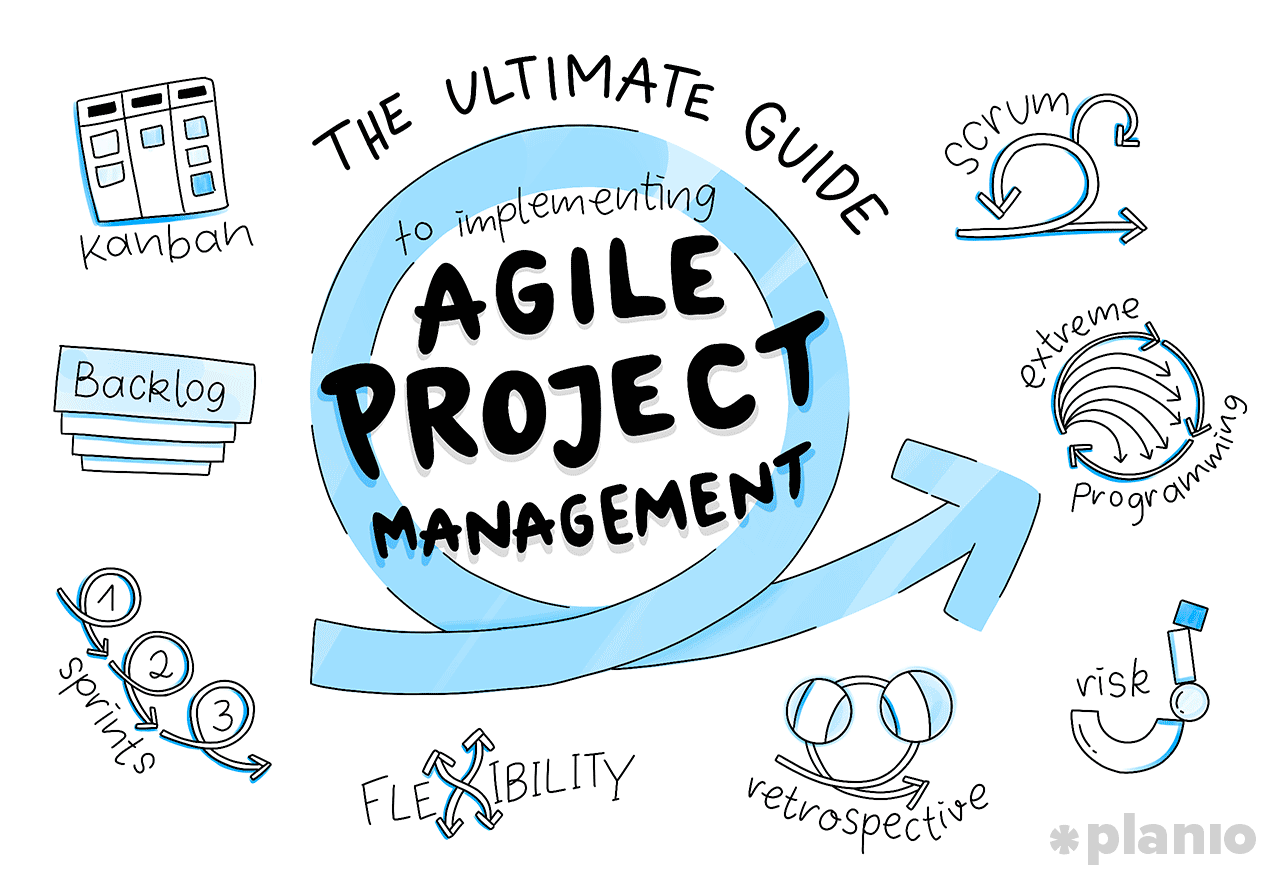How do companies like Microsoft and Google update every single one of the products in a week or two while other companies take years? The The short answer is: Velocity in Agile and Agile project management.
While teams following a “traditional” software development process (like Waterfall) will spend months or years building a product before showing users, Agile flips that process on its head.
Agile project management is a product philosophy that’s built on moving fast, releasing often, and learning from your actual users. And it works.
Research from the Project management institute found that Agile organizations are more likely to finish projects on time (65% vs. 40%) and hit all their goals (75% vs. 56%) when compared to non-Agile teams. Agile companies even grew their revenue 37% faster!
Let’s repeat that one more time before we dive in: Agile teams build products faster, hit their goals more often, and make more money. So why wouldn’t you want to bring Agile project management to your team?
What is Agile? And how does it work in project management?
Agile is a development process that takes an iterative approach to building software. Teams use a number of Agile methodologies to plan releases and then work in time-blocked “sprints” to continuously push out new software and learn from customer feedback.
Click ”thetechboy” more interesting Informations.
It’s this tight “feedback loop” between customers and the developers that allows Agile teams to increase their development speed, collaborate better, and react quickly to customer needs and market changes.
Yet while Agile has become the standard for almost every major software company from Apple to Facebook to Spotify, this wasn’t always the case.
Until the last few decades, most projects were run on what’s known as the Waterfall (or Traditional) method of development. In the Waterfall method, teams plan out the entire development process first and then work through it sequentially before releasing it to users.
Click ”marketbusinesstech” more interesting Informations.
This means companies were investing a huge amount of time, resources, and money into something they didn’t even know would be a success.
Be design, the waterfall method relies on predictability and sequence. But what most software developers started to crave was a more flexible project management method that included space for errors, bugs, setbacks, market changes, and feedback from real users.
The 4 core principles of running an Agile project
At its core, Agile project management isn’t so much a methodology as a philosophy.
This means that while there are many different ways to implement Agile, they all share a few core beliefs that clearly differentiate them from the Waterfall method:
- Individuals and interactions over processes and tools
- Working software over comprehensive documentation
- Customer collaboration over contract negotiation
- Responding to change over following a plan
This doesn’t mean you should ignore the tools, documentation, and plans you’ve worked so hard to develop. But rather that the core focus of Agile project management should be on people, prototypes, collaboration, and iteration.
While these principles give you a good high-level view into the Agile mindset, they’re still a bit vague. That’s why the original Agile founders also released a list of 12 guiding principles for running an Agile project:
- The highest priority is to satisfy the customer through early and continuous delivery
- Welcome changing requirements, even late in development
- Deliver working software frequently, from a couple of weeks to a couple of months
- Stakeholders and developers must collaborate on a daily basis
- Build projects around motivated individuals. Give them the environment and support they need, and trust them to get the job done.
- Face-to-face meetings are deemed the most efficient and effective format for project success
- A final working product is the ultimate measure of progress
- Agile processes promote sustainable development. The sponsors, developers, and users should be able to maintain a constant pace indefinitely.
- Continuous attention to technical excellence and good design enhances agility
- Simplicity, maximizing the work not done, is an essential element
- The best architectures, requirements, and designs emerge from self-organizing teams
- At regular intervals, the team reflects on how to become more effective, then tunes and adjusts its behavior accordingly
If you think of software development today, Agile is a direct response to sky-high user expectations.

